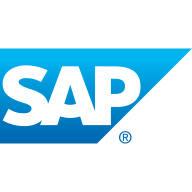

SSIS and SAP Analytics Hub are competing in the data management and analytics space. SAP Analytics Hub has a competitive edge owing to its comprehensive features, while SSIS wins in affordability and support services, attracting cost-conscious technologists.
Features: SSIS offers robust data integration and ETL processes, excels in connecting various data sources, and provides a seamless experience within Microsoft environments. SAP Analytics Hub, on the other hand, provides advanced visualization, centralized analytics access, and integrates effectively with SAP products.
Room for Improvement: SSIS could benefit from enhanced user interface and flexibility in non-Microsoft environments, as well as improved data visualization capabilities. SAP Analytics Hub faces challenges with its complex initial setup, higher deployment costs, and reliance on premium support for direct customer service interaction.
Ease of Deployment and Customer Service: SSIS simplifies deployment for Microsoft users with its seamless integration, backed by responsive customer service. SAP Analytics Hub offers a centralized analytics platform that is easy to access, though it may require complex initial configurations and relies on extensive support documentation.
Pricing and ROI: SSIS is cost-effective with lower setup costs and high ROI due to efficient data management. SAP Analytics Hub, despite higher costs, offers a significant long-term strategic ROI with its expansive analytics features and integrated platform.


SAP Analytics Hub simplifies access to analytics scattered across multiple heterogeneous environments. The solution recommends the best analytics to fit personalized needs and grants users with actionable insights without compromising agility.
SSIS is a versatile tool for data integration tasks like ETL processes, data migration, and real-time data processing. Users appreciate its ease of use, data transformation tools, scheduling capabilities, and extensive connectivity options. It enhances productivity and efficiency within organizations by streamlining data-related processes and improving data quality and consistency.
We monitor all Data Integration reviews to prevent fraudulent reviews and keep review quality high. We do not post reviews by company employees or direct competitors. We validate each review for authenticity via cross-reference with LinkedIn, and personal follow-up with the reviewer when necessary.